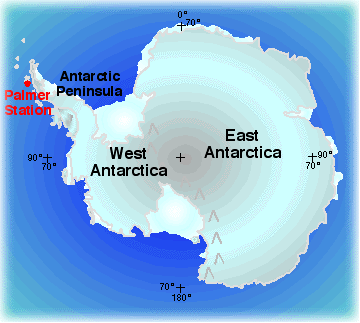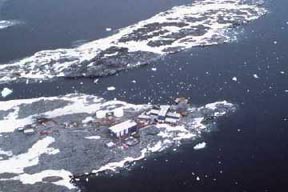





Hello! I'm Mimi Wallace from El Paso, Texas. I would wager to say that I am
the most excited science teacher in town because of the wonderful
opportunity and adventure that awaits me! I teach science at Montwood High
School in the Synergy Program. Synergy is a program that integrates the
core curriculum and technology. I have approximately 105 freshmen who will
stay with me throughout high school. In other words, I will teach them
biology their freshman year, chemistry their sophomore year, AP Biology
their junior year, and physics their senior year. Their science is tied
together with English, math, history, and technology.
I studied biology at Angelo State University in San Angelo, Texas. I have
been a science teacher for 12 years, 5 of those at Montwood High School. I
am interested in a variety of subjects: anything from literature to
science. I love reading, gardening, horseback riding, skiing, hiking, and
traveling. My adventuresome spirit has even taken me skydiving! I have been
fortunate to parcticipate in numerous professional growth opportunities and
in the process have made many friends throughout the country. Most
recently, I spent this past summer at Princeton University as a Woodrow
Wilson National Fellow.

Location of Palmer Station on the Antarctic Peninsula

Long-term Ecological Monitoring, Antarctic Peninsula, Palmer Station
Karen Baker.
University of California - San Diego/Scripps Institute
of Oceanography
At the turn of the new millennium, January 1, 2000, I will depart for my
field experience in Antarctica.
I will arrive at Palmer Station located on the Antarctic Peninsula via the
R/V LM Gould. The Palmer
Long Term Ecological Research (Palmer/LTER) site is located at Palmer
Station. It is one of only 21
long-term research sites around the globe. The Palmer/LTER is a very
dynamic study site due largely
to the annual advance and retreat of sea ice on the Antarctic marine
ecosystem. Antarctic sea ice
fluctuates from about 4 million square miles during the summer months to
nearly 20 million square
miles in the winter! This HUGE annual advance and decay of sea ice is a
major controlling factor in
ecological processes surrounding the Antarctic Peninsula. It effects
everything from the growth of
phytoplankton to the breeding success of sea birds and large sea mammals.
For almost 20 years
researchers have been investigating this interplay between the physical
and
biological environment.
Their research is invaluable as it gives us a clearer picture of the
ecological processes and interactions over long periods of time. For
almost
two decades researchers have gathered large data sets to help us
understand trends and patterns within the Antarctic ecosystem. Imagine
what
stories will unfold after a
century or more of data collection!
Studying this unique environment is a big undertaking and there are many
different groups which
focus on various components. I will be responsible for several different
tasks while in Antarctica. In
the past few months, I have spent time with my principal investigator,
Karen Baker, at the Scripps
Institute of Oceanography in San Diego. While there I received training on
the fluorometric techniques.
These techniques basically measure the amount of chlorophyll in a given
amount of water. Chlorophyll
counts are crucial because they help tell the story of primary
productivity
in the Antarctic marine
system. Specifically, I will be testing two different solid standards that
are used for calibration in
fluorometers at Palmer Station. These instruments must be routinely
calibrated in order to insure accurate measurements.
In addition to the solid standard tests, I will also be conducting water
quality tests on the marine waters
surrounding Palmer Station. My students in El Paso, Texas, are involved in
testing the waters of the
Rio Grande River and there is interest to see how the two aquatic systems
are similar/different. Another
focus of my work will be to develop photographic catalogues and virtual
tours of my work at Palmer,
the research vessel LM Gould, penguin rookeries and more. These will then
be mounted on the TEA
and Palmer/LTER website. I am also planning to take a student designed
experiment with me in to the
field! Stay tuned for an update. Another thing I am interested in doing is
identifying and collecting
items from the Antarctic for a traveling educational "ice chest." This ice
chest will include Antarctic
artifacts, books, references, etc., to be shared among interested
schools.
 |
 |
| Palmer Station, Antarctica |
Aerial view of Palmer Station |
| Photos courtesy of Palmer/LTER digital
archives. |
Look at a penguin rookery panoramic image from Mimi:
http://www.socorro.k12.tx.us/schools/montwoodhs/cormorant.mov







